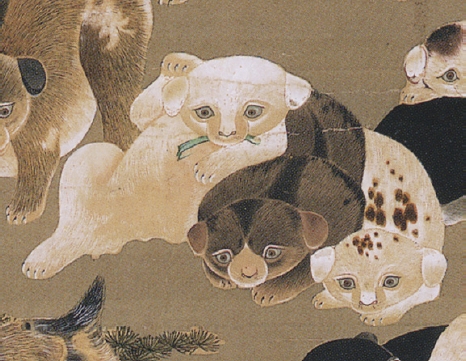 |
 |
- Search
| Korean J Art Hist > Volume 313; 2022 > Article |
|
Abstract
ACKNOWLEDGEMENTS
Notes
1) The influence of the Kundaikan âPainterâs Listâ on Japanese connoisseurial practice is examined in Yukio Lippit, Painting of the Realm : The Kano House of Painting in Seventeenth-Century Japan(Seattle: University of Washington Press, 2012), 119-132. See also Ide Seinosuke, SĹgen no butsuga, vol. 418 in Nihon no bijutsu series(Tokyo: ShibundĹ, 2001), 20-22.
2) For more on Yi Am, see Soyoung Lee, âArt and Patronage in the Early Joseon,â in Soyoung Lee, Art of the Korean Renaissance, 1400-1600(New York: The Metropolitan Museum of Art, 2009), 15-63; and Sunpyo Hong and Chin-Sung Chang, âPeace under Heaven: Confucianism and Painting in Early Joseon Korea,â in Lee, ibid, 65-90. Yi Am is discussed within the context of Joseon-dynasty animal painting in Chung Seyang, âTurning Toward Each Other: Warmth and Intimacy in ChosĹn Dynasty Animal Painting,â Acta Koreana 9, no. 1(Jan 2006): 53-87. The earliest sustained examination of Yi Am in Japan is found in Yoshida YĹŤji, âRichĹ no kachĹga to Nihon,â in RichĹ kaiga-rinkoku no meitĹ na bi no sekai, exh. cat.(Nara: Yamato Bunkakan, 1996), 6-11. For the most comprehensive overview of his life, see Itakura Masaaki, âRi Gan, imeeji no keisei to tenkai-Higashi Ajia kaigashi no kanĹsei-,â Kokka 1481(March 2019): 34-43.
3) For a useful summary of the wide-ranging symbology of dogs in Chinese visual culture, see Patricia Bjaaland Welch, Chinese Art: A Guide to Motifs and Visual Imagery (Rutland, VT: Tuttle Publishing, 2008), 118-120. Judging by later Japanese examples, paintings with dogs often formed âpuzzle picturesâ that functioned as rebuses with auspicious messages. The most well-known example combines dogs with bamboo to constitute the character for âsmileâ or âlaughterâ çŹ, by combining the bamboo radical with the character for âdog.â For a discussion of this and other examples of puzzle pictures with dogs, some with Zen themes, see Imahashi Riko, Edo no dĹbutsuga-Kinsei bijutsu to bunka no kĹkogaku (Tokyo: TĹkyĹ Daigaku Shuppankai, 2004).
4) For an English translation see Amy McNair, Xuanhe Catalogue of Paintings (Ithaca: Cornell University Press, 2019), 388.
5) A detailed introduction to this pair can be found in Itakura Masaaki, âDen MĹeki hitsu Shokki yĹŤbyĹ zu KanzĹ yĹŤku zu o megutte no shomondai,â Yamato bunka 100(Aug 1998): 28-37. Itakura observes that although the two paintings are currently paired, they bear stylistic differences indicating that they are by different artists.
6) This observation is made in ItĹ Daisuke, âYosa Buson hitsu kushi zu,â Kokka 1203(Feb 1996): 31-35. See also Itakura, âDen MĹeki,â ibid.
8) See Kasai Masaaki et al, eds., YakuchĹŤ HonchĹ gashi (Kyoto: DĹbĹsha, 1985), 485. The phenomenon of seal names forming the basis of paintersâ biographies is discussed in Lippit, Painting of the Realm , ibid.
10) For an overview of his work, see Yukio Lippit, âTawaraya SĹtatsu: Five Perspectives,â in SĹtatsu, ed. Yukio Lippit and James T. Ulak(Washington, D.C.: Arthur M. Sackler Gallery, Smithsonian Institution, 2015), 23-41.
11) See the assortment of SĹtatsu puppy paintings illustrated in Yamane YĹŤzĹ, ed., SĹtatsu-ha ni, vol. 2 of Rinpa kaiga zenshĹŤ(Tokyo: Nihon Keizai Shinbunsha, 1978), 305-306.
12) The suggestion that Yi Amâs puppies served as a reference for SĹtatsuâs tarashikomi technique is first made in Tsuji Nobuo, âSĹtatsu-ha no sĹka-zu gairon-suibokuga kingindei-e nado no mondai mo fukumete,â in Yamane, ed., SĹtatsu-ha, ibid, 5-18.
13) The painting was first introduced in Nakamura Tanio, âIsshi Bunshu san kushi zu,â Kobijutsu 51(1976): 125-127.
14) See Karasumaru Mitsuhiro to Tawaraya SĹtatsu, exhibition catalogue(Tokyo: Itabashi Ward Museum, 1982), entry to plate 73. Elizabeth Lillehoj suggests that Isshiâs embrace of the MerĹfu(C: Malangfu) Kannon encouraged TĹfukumonâin to fund the production of oshi-e ćźçľľimages; see Art and Palace Politics in Early Modern Japan 1580s-1680s(Leiden: Brill, 2011), 151.
15) See the collected essays in The Koan: Texts and Context in Zen Buddhism, ed. Steven Heine and Dale S. Wright(Oxford: Oxford University Press, 2000). For âA Dog Has No Buddha-Natureâ in particular, see Ishii Shudo, âKung-an Châan and the Tsung-men tâung yao chi,â pp. 110-136 and Morten Schlutter, ââBefore the Empty Eonâ versus âA Dog Has No BuddhaNatureâ: Kung-an Use in the Tsâao-tung Tradition and Taâhuiâs Kung-an Introspection Châan,â pp. 168-199 in that book. See also Robert H. Sharf, âHow to Think with Chan Gongâan,â in Thinking with Cases: Specialized Knowledge in Chinese Cultural History, ed. Charlotte Furth et al(Honolulu: University of Hawaiâi Press, 2007), 205-243.
16) Yukio Lippit, âTawaraya SĹtatsu and the Watery Poetics of Japanese Ink Painting,â Res 51(Spring 2007): 57-76.
17) Kadowaki Mutsumi, âEsshĹŤ kushi wa to kaiga-soshi zu, shĹzĹga, Sotatsu, JakuchĹŤ,â JĹsai kokusai daigaku Nihon kenkyĹŤ sentaa kiyĹ 4(2009): 37-49.
19) Haruo Shirane, Traces of Dreams: Landscape, Cultural Memory, and the Poetry of Basho(Stanford: Stanford University Press, 1998), 1-29.
20) On Busonâs poetics see Makoto Ueda, The Path of Flowering Thorn: The Life and Poetry of Yosa Buson(Stanford: Stanford University Press, 1998), and Cheryl A. Crowley, Haikai Poet Yosa Buson and the BashĹ Revival(Leiden: Brill, 2007).
23) Fukushi YĹŤya, âChĹsen kaiga to kinsei Nihon kaiga,â in ChĹsen ĹchĹ no kaiga to Nihon, exh. cat.(Tokyo: Yomiuri Shinbun, 2008), 214-217.
24) The most common alternative interpretation reads the broom as a device for sweeping away desire, which in a generic sense accords with the Buddhist framework of the subject matter. See, for example, Murata Takashiâs entry in JakuchĹŤ ten, ibid, 192.
25) See the discussion in Seitan sanbyakunen onaitoshi no tensai eshi JakuchĹŤ to Buson, exhibition catalogue(Shiga: Miho Museum, 2015), 323.
26) See ItĹ JakuchĹŤ-anazaa waarudo, exhibition catalogue(Shizuoka and Chiba: Shizuoka Kenritsu Bijutsukan and Chiba Shiritsu Bijutsukan, 2010), 158.
27) Mother Dog and Puppy was first introduced in Kyoto National Museum, ed., JakuchĹŤ Daizen(Tokyo: ShĹgakkan, 2002), pl. 86. See the discussion of the inscription in Kadowaki, âEsshĹŤ kushi wa,â ibid, 46.
28) The interpretation of One Hundred Dogs in relation to the âOne Hundred Childrenâ theme is found in Imahashi Riko, Edo no dĹbutsuga-kinsei bijutsu to bunka no kĹkogaku(Tokyo: TĹkyĹ Daigaku Shuppankai, 2004), 316-319.
Fig. 1.
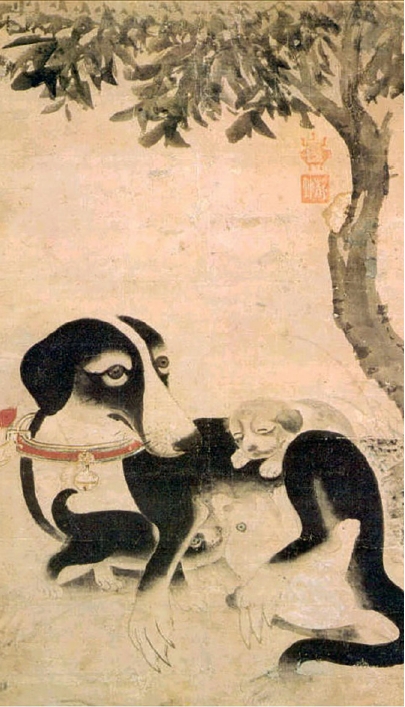
Fig. 2.
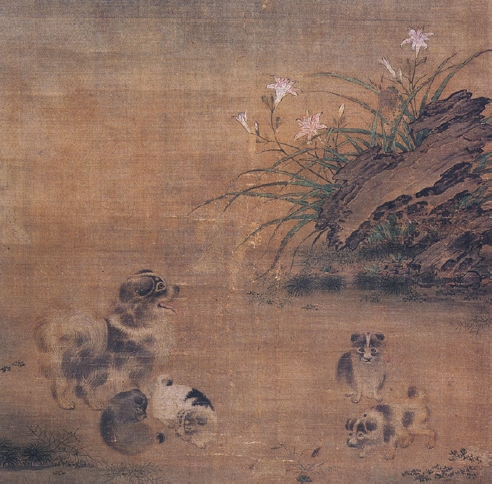
Fig. 3.
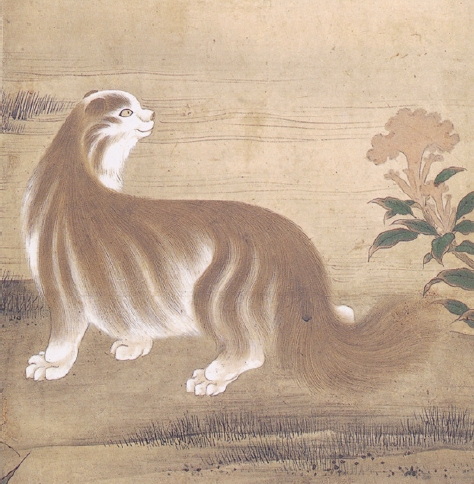
Fig. 4.
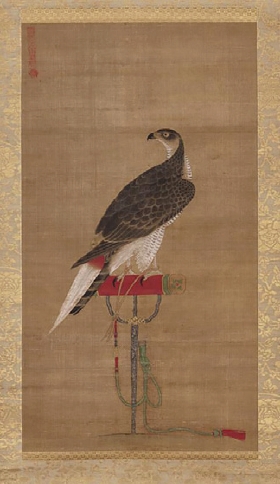
Fig. 5.
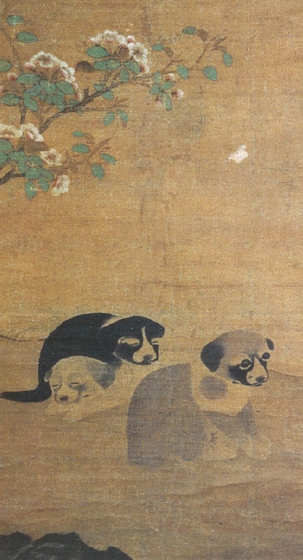
Fig. 6.
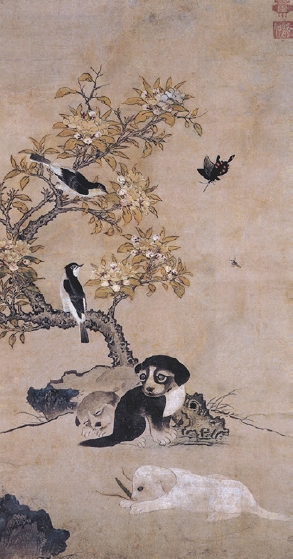
Fig. 7.
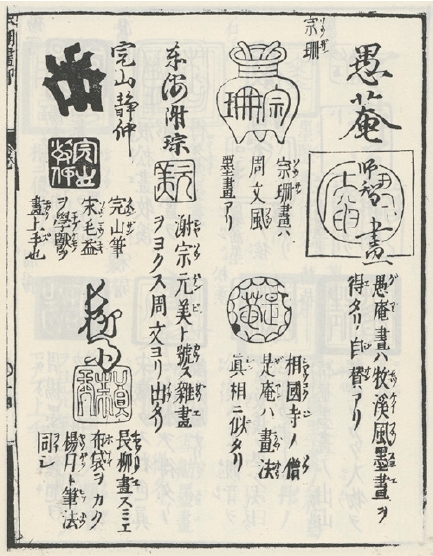
Fig. 8.
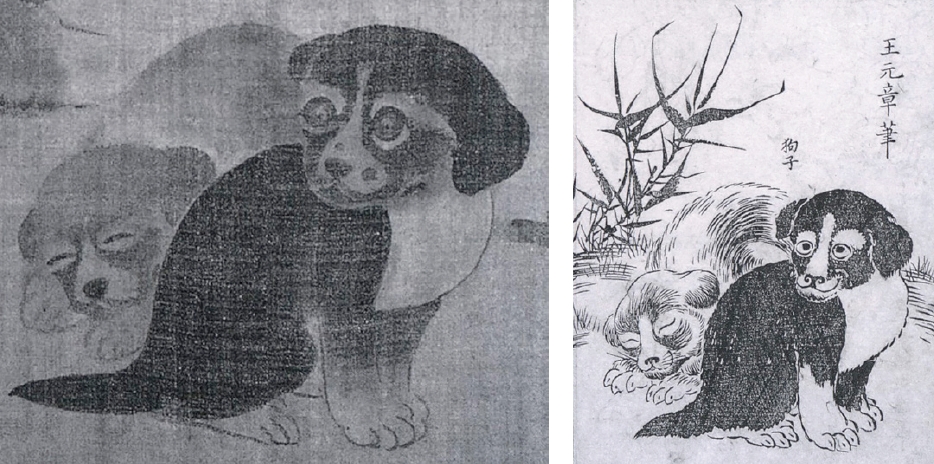
Fig. 9.
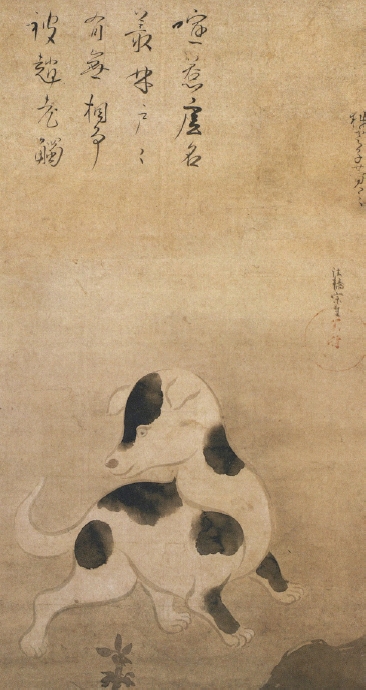
Fig. 10.
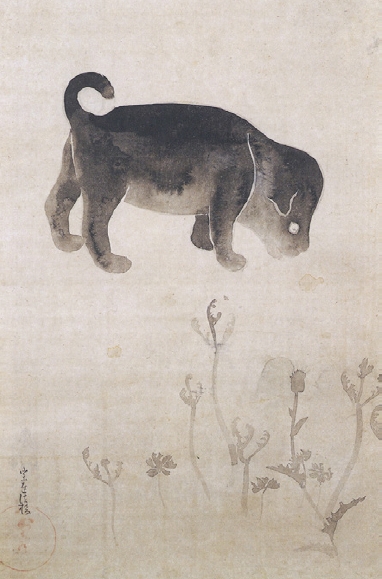
Fig. 11.
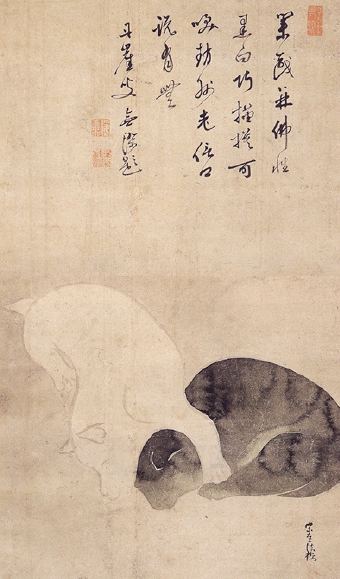
Fig. 12.
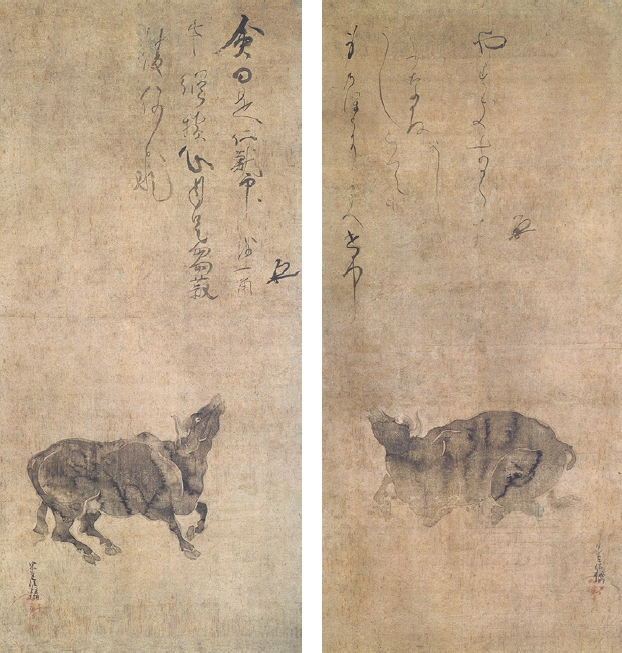
Fig. 13.
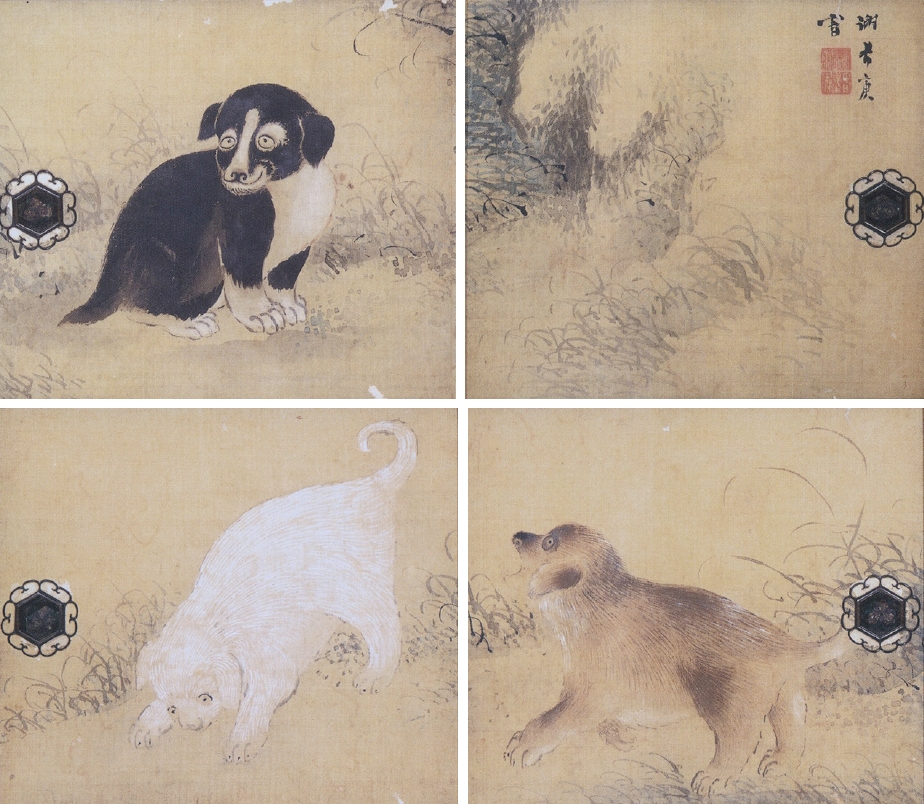
Fig. 14.
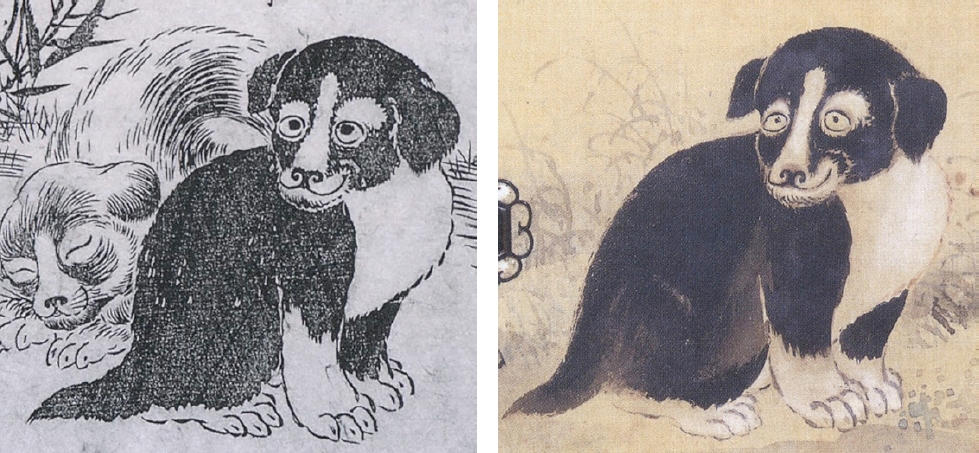
Fig. 15.
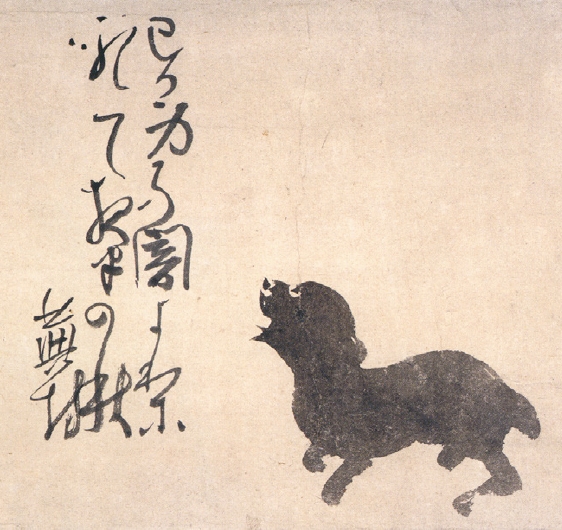
Fig. 16.
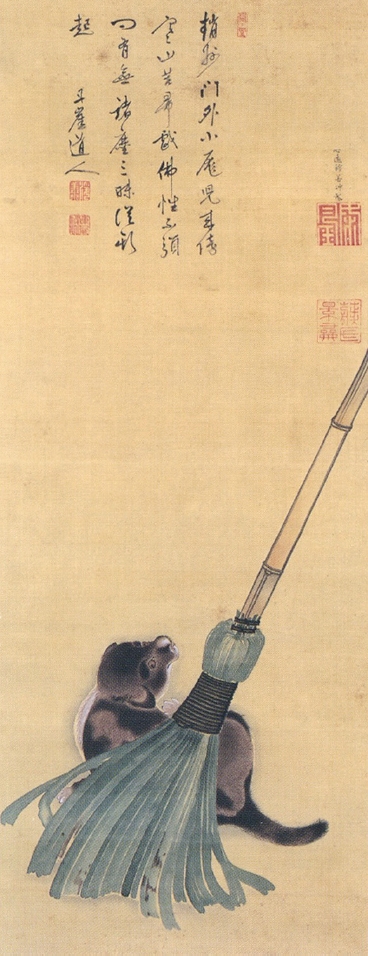
Fig. 17.
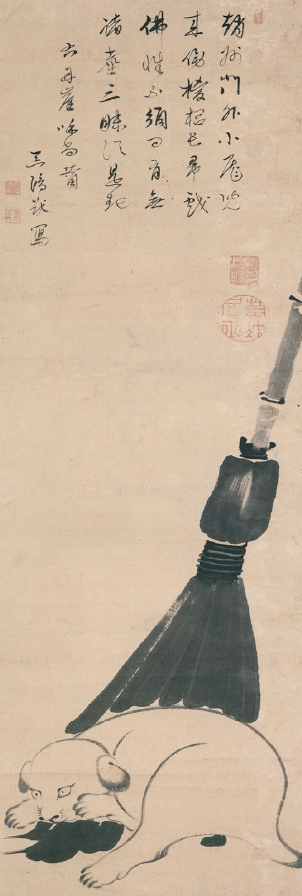
Fig. 18.
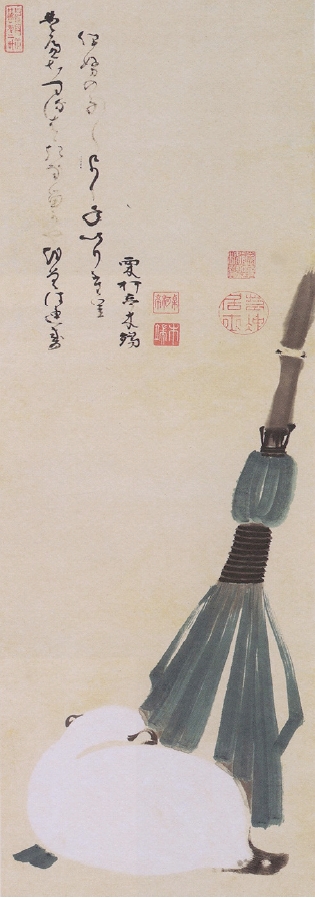
Fig. 19.

REFERENCES
- TOOLS





